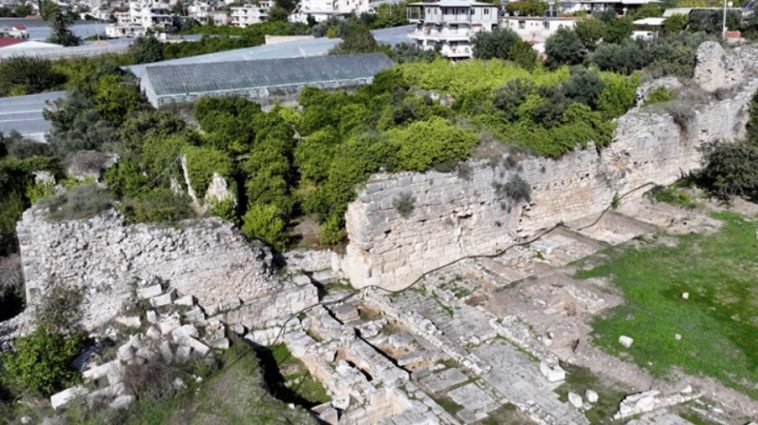A 43-Year Search Ends with a Major Discovery
Archaeologists in Antalya’s Finike district have made a remarkable discovery in the ancient Lycian city of Limyra. After 43 years of searching, a portion of the Zeus Temple, known from epigraphic sources since 1982 but never physically located, has finally been unearthed. The excavation, carried out at the foothills of Toçak Mountain, reveals a glimpse into the city’s rich historical and religious past.
Limyra, one of the major eastern cities of the Lycian Civilization, was the capital under King Pericles of Lycia and later became an important bishopric center during the Byzantine era. The city is notable for its rock tombs, fortified walls, the monumental Pericles Heroon, a 6,000-seat theater, Roman baths, Ptolemaion monument, central avenue, and a tomb built for Gaius Caesar.
Excavations Lead by Limyra Coordination Team
The ongoing excavations are being conducted under the leadership of Assoc. Prof. Dr. Kudret Sezgin, Coordinator of Limyra Excavations, in collaboration with the Austrian Archaeological Institute. The team has now identified the long-sought location of the Zeus Temple, with the western sector revealing key structural remnants.
Dr. Sezgin emphasized the historical importance of the site:
“Based on archaeological evidence, Limyra’s earliest urban development dates back over 2,400 years, to the Classical period. King Pericles undertook significant urban projects here, making Limyra a central hub in Lycia.”
He added that the city was incorporated into the Heritage for the Future Project in 2023, highlighting its growing importance in historical preservation.
The Temple’s Discovery and Structure
The Zeus Temple, identified through a combination of epigraphic data and excavation, had been known historically but its exact location remained a mystery. Dr. Sezgin explained:
“We have now uncovered the structure that epigraphic sources had referenced since 1982. Archaeological evidence confirms that this is a Classical period temple dedicated to Zeus. Historical records also confirm Zeus as the city’s chief deity during both the Hellenistic and Roman periods.”
The team revealed the east-facing main entrance and ante walls of the temple, which may have served as a covered porch. The front facade stretches 15 meters wide, and interestingly, parts of the temple were later incorporated into Byzantine fortifications. The sacred chamber of the temple lies beneath what is today private orange orchards, with excavation continuing once land acquisition is finalized.
Pottery and Urban Insights
Numerous pottery fragments have been discovered on-site, providing insight into Limyra’s settlement history, which now extends back 5,000 years. According to Dr. Sezgin, this discovery requires a reassessment of the city’s urban development theories:
“The monumental gate identified beneath the Roman Street, known as the ‘propylon,’ is now understood as the entrance to the sacred area of the temple in the Classical period. Additionally, the so-called Hellenistic period wall appears to have been a protective enclosure for the temple complex.”
These findings not only shed light on the architectural evolution of Limyra but also offer a deeper understanding of Lycian religious practices, the role of Zeus as the city’s primary deity, and the city’s interaction with Hellenistic and Roman urban planning.
Significance of the Discovery
The unearthing of the Zeus Temple in Limyra is a landmark in Turkish archaeology. It reconnects the city’s monumental structures with its historical records and ancient urban layout. Archaeologists hope that ongoing excavations will reveal further artifacts and details about Lycia’s classical, Hellenistic, and Roman periods.
Dr. Sezgin concluded:
“This discovery helps redefine the historical narrative of Limyra. Each artifact, from the temple’s foundations to the pottery shards, tells a story of a city that was once a central hub of Lycian civilization, spiritual life, and urban development.”

